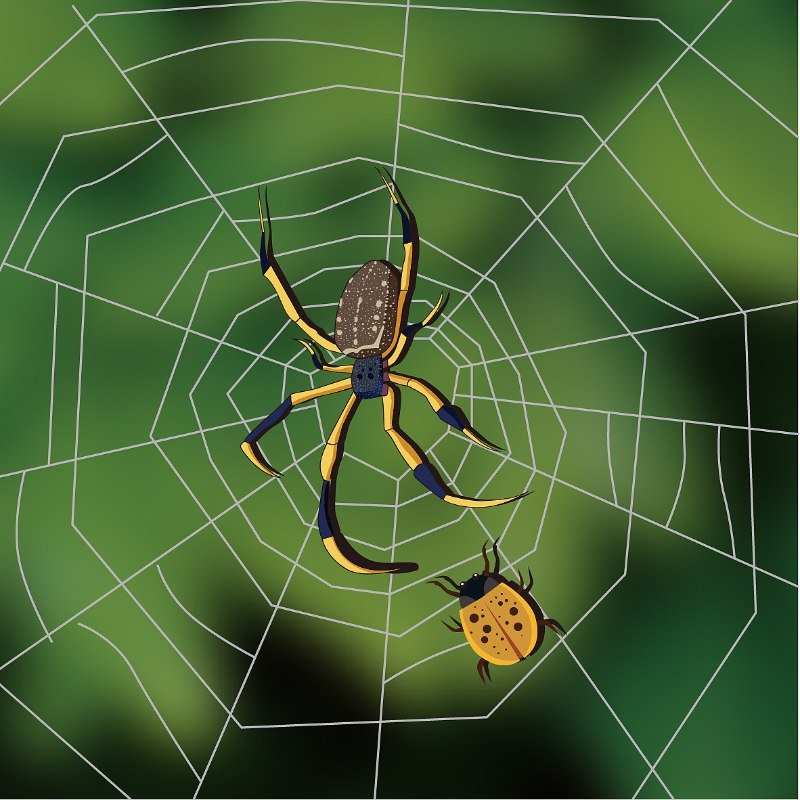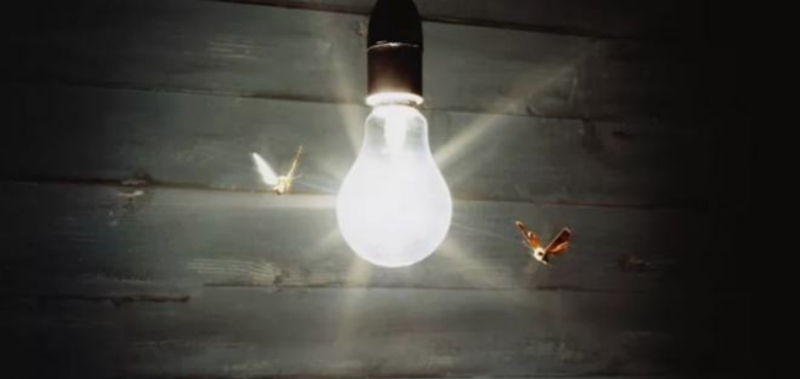Do LED Lights Attract Spiders
January 07, 2025
Do LED Lights Attract Spiders? Learn The Truth
While cleaning the house at night, you might encounter a spider and find yourself wondering: Do LED lights attract spiders? The connection between light, insects, and spiders sparks curiosity because of its impact on our living spaces.
This article will explore spider habits, insect behaviour around light, and the science behind LED lighting. They will provide a comprehensive answer.
(This article uses illustrations instead because some visitors may be afraid of spiders. )
Understanding Spider Habits: Why Light Matters
Spiders are fascinating creatures with unique characteristics, especially regarding their interaction with light. Unlike humans and many animals, spiders have simple eyes that lack lenses and the ability to focus. This limitation means light is not attractive to spiders like other creatures might be. They generally prefer dark, damp environments where they feel safe.
However, their web-building behaviour tells a different story.
Spiders often construct their webs in areas exposed to light or wind. Why? The answer lies in their primary food source: insects.
Light attracts many nocturnal insects, creating a hunting hotspot for spiders. While spiders themselves may not seek out light, they are carpetbag hunters and build webs where insects are plentiful.
This raises the question: Do certain types of light indirectly attract spiders by drawing in insects? To answer that, we need to examine how different types of lighting influence insect activity.

The Role of Light in Attracting Insects
Insects, particularly those active at night, are naturally drawn to light sources. This phenomenon, known as phototaxis, varies depending on the type of light emitted.
At the AAAS meeting, presenting a study. It showed how different types of light attract insects. Researchers compared six different light sources, including:
· Incandescent bulbs
· Cool-toned LED lights
· Warm-toned LED lights
· Yellow “bug lights”
The experiment, conducted in a community in Virginia, involved setting up traps fitted with these lights during the summer. Over the study period, researchers captured and analyzed 8,887 insects and spiders. Here’s what they discovered:
1. Incandescent Lights: The worst offenders, attracting an average of eight insects per hour.
2. Cool-Toned LED Lights: Moderately attractive to insects, but less so than incandescent bulbs.
3. Warm-Toned LED Lights & Bug Lights: They are the least appealing, attracting merely around 4.5 insects per hour.
The results clearly show that traditional incandescent bulbs are far more attractive to insects. Modern LED lights, especially warm-toned LEDs and yellow bug lights, are the least appealing.
Why LED Lights Attract Fewer Insects
To understand why LED lights are less appealing to insects, we need to explore their technological differences.
1. No Infrared or Ultraviolet Radiation
Traditional lighting, such as incandescent and fluorescent lamps, emits ultraviolet (UV) and infrared (IR) radiation. These wavelengths are highly attractive to many insects. LED lights convert electrical energy directly into light energy without producing significant UV or IR radiation.
2. Specific Wavelengths
LED lights primarily emit light in two wavelengths: a blue chip and a yellow phosphor, which combine to produce white light. This light is less appealing to insects than the wider light spectrum from incandescent and fluorescent lights.
3. Minimal Heat Emission
Another factor is thermal light. Incandescent bulbs emit significant heat, which can attract heat-seeking insects. LED lights operate at much cooler temperatures, further reducing their appeal.
These unique characteristics of LED lights make them a more insect-friendly option. Because LED lights attract fewer insects, spiders naturally gather around them less often.
Do LED Lights Attract Spiders? The Answer Explained
After understanding spider habits and insect behaviour around different lights, we can confidently answer the question now.
The answer is no—at least, not directly. Spiders themselves are not drawn to LED lights. And because LED lights attract significantly fewer insects than traditional bulbs, the chances of spiders building webs near LED lights are much lower.
However, it’s important to note that spiders may still appear near any light source if there are sufficient insects in the vicinity. But by choosing warm-toned LED lights or yellow bug lights, you can greatly minimize this possibility.
Benefits of Choosing LED Lights
Switching to LED lighting isn’t just about reducing the attraction of insects and spiders. Here are some additional advantages:
1. Energy Efficiency: LED lights consume significantly less electricity compared to incandescent or fluorescent bulbs.
2. Durability: LEDs have a longer lifespan, saving you money on replacements.
3. Eco-Friendly: With no mercury or harmful emissions, LEDs are a greener lighting option.
4. Versatility: Available in various colours and intensities, LED lights can suit any environment.
Tips: How to Minimize Spiders and Insects Around Your Home
If you want to keep insects and spiders at bay, here are some practical tips:
1. Choose Warm-Toned LED Lights or Yellow Bug Lights
These lights are less attractive to insects, reducing the likelihood of spiders setting up webs.
2. Seal Entry Points
Check for cracks, gaps, or other openings in walls, windows, and doors where insects and spiders can enter.
3. Reduce Outdoor Lighting
If possible, limit outdoor lighting at night or use motion-sensor lights to minimize continuous attraction for insects.
4. Keep Your Space Clean
Regularly clean and declutter areas where spiders might build webs, such as corners, basements, and outdoor eaves.
Conclusion
The relationship between LED lights, insects, and spiders sheds light on how we can make our living spaces less inviting to these creatures. While spiders are not directly attracted to light, their hunting habits often lead them to areas where insects congregate. The type of lighting plays a significant role in determining the level of insect activity and, by extension, the likelihood of spider presence.
Studies confirm that traditional incandescent bulbs are the most attractive to insects, whereas warm-toned LED lights and yellow bug lights attract far fewer. This reduced attraction to insects translates into a decreased chance of spiders building webs near these light sources. Moreover, the technological advantages of LED lights, including their lack of ultraviolet and infrared radiation, specific wavelengths, and minimal heat emission, make them an optimal choice for insect and spider reduction.
Choosing LED lights offers additional benefits beyond managing pests. They are energy-efficient, durable, eco-friendly, and versatile, making them a practical and sustainable lighting solution. For those seeking to further minimize spiders and insects, implementing strategies such as sealing entry points, reducing outdoor lighting, and maintaining cleanliness in potential web-building areas can be highly effective.
Ultimately, the answer to whether LED lights attract spiders is reassuring. By opting for modern LED lighting, particularly warm-toned or yellow bug lights, and maintaining a well-sealed and clean environment, you can create a space that is not only inviting for you but also less appealing to insects and spiders. This practical approach allows you to enjoy the benefits of effective lighting while keeping your home as spider-free as possible.

